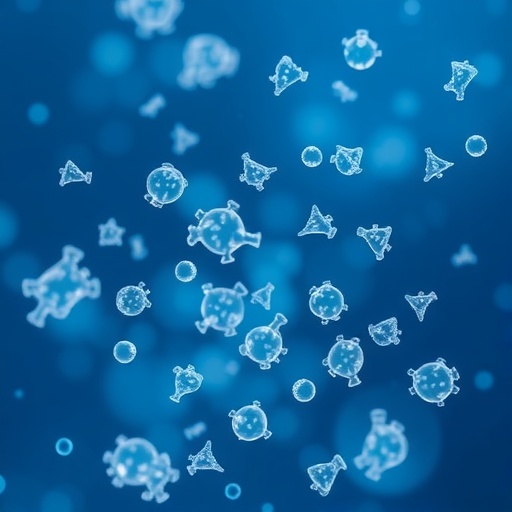The escalating proliferation of microplastics in ecosystems worldwide has galvanized the scientific community into exploring not only the environmental footprint of these particles but also their potential toxicity. In this context, a groundbreaking advancement is marking a promising leap forward: “The Toxicity of Microplastics Explorer (ToMEx) 2.0.” This platform, presented by Hampton, L.M.T., Wyler, D.B., Almroth, B.C., and colleagues, embodies a comprehensive and sophisticated tool designed to quantify and elucidate the toxic impacts of microplastic pollutants in varied biological systems.
At its core, ToMEx 2.0 emerges as an integrative computational framework capable of aggregating vast datasets from multiple sources, allowing researchers to dissect the multifaceted mechanisms underlying microplastic toxicity. Unlike previous iterations, this second version boasts enhanced algorithmic capabilities and an expanded database that encompasses chemical interactions, particle morphology, and biological endpoints. This evolutionary step in the tool’s development is pivotal for refining risk assessments and driving forward regulatory policies grounded in robust scientific insight.
Microplastics, defined generally as plastic debris less than 5 millimeters in size, infiltrate environments ranging from oceanic depths to terrestrial biomes. Their pervasiveness is linked with detrimental effects on organisms across trophic levels. The challenge has been consistently capturing the variability and complexity of these effects, given microplastics’ vast heterogeneity in shape, size, polymer composition, and additive chemicals. ToMEx 2.0 addresses this complexity by synthesizing experimental data with predictive modeling, thereby offering a panoramic view of the toxicological landscape.
The architecture of ToMEx 2.0 is designed to integrate physicochemical properties of microplastics with their biological interactions. By modeling pathways that lead from exposure to cellular and systemic toxicity, the tool identifies key drivers of adverse effects. Central to this is the capacity to incorporate nanoparticle behavior, since nanoplastics, the smaller cousins of microplastics, present an even greater potential for cellular penetration and bioaccumulation, intensifying the toxic impact.
Moreover, ToMEx 2.0’s database collates data from diverse biological species, highlighting interspecies sensitivity and uncovering potential biomarkers for early detection of microplastic-induced toxicity. This cross-species analytical power is particularly important, considering that microplastics impact a broad range of taxa, including those critical for ecosystem stability and human health such as fish, invertebrates, and even mammals.
One of the hallmark features of ToMEx 2.0 is its use of advanced machine learning algorithms. These algorithms enable the identification of patterns in complex datasets that would be impossible for conventional analysis methods to detect. It leverages supervised learning to calibrate toxicity predictions against verified experimental outcomes, refining predictive accuracy while identifying novel toxicological pathways previously unrecognized.
As microplastics often carry adsorbed environmental contaminants such as heavy metals and persistent organic pollutants, ToMEx 2.0 also integrates chemical interaction profiling. This innovative facet allows researchers to quantify synergistic or antagonistic effects resulting from these co-contaminants, which is vital given that such additives can amplify toxic responses and obscure simplistic cause-effect relationships.
Importantly, the tool features a user-friendly interface with modular options, enabling both novice users and expert toxicologists to apply it to various research questions. Whether the focus is aquatic toxicity, human health implications, or environmental fate, ToMEx 2.0 offers scalable solutions tailored to different investigative scales and complexities.
The implications of ToMEx 2.0 extend beyond academic inquiry; its predictive capabilities can inform regulatory frameworks and contribute to the design of safer materials. By prospectively assessing the toxicity potential of novel polymers before commercial release, policy-makers and manufacturers can circumvent ecological and health crises associated with plastic pollution.
This platform’s comprehensive approach also spotlights the pressing need for standardizing toxicity testing protocols across laboratories internationally. Consistency in experimental design and data reporting is essential for effectively populating ToMEx’s database, which, in turn, enhances the fidelity and generalizability of its predictive outputs.
Beyond immediate toxicological investigations, ToMEx 2.0 can support environmental monitoring programs by identifying sentinel species most at risk or early warning signs of ecological distress. This application underscores the platform’s role in bridging laboratory findings with real-world ecosystem management challenges.
The collaborative nature of the project reflects a multidisciplinary ethos, merging environmental science, toxicology, computational biology, and material sciences. Such integration is critical given the multifactorial nature of microplastic pollution and its embedded toxicities.
As the scientific community faces mounting pressures to address global plastic pollution, tools like ToMEx 2.0 stand out by transforming complexity into actionable knowledge. The ability to rapidly analyze, predict, and visualize the toxicological profiles of micro- and nanoplastics could revolutionize how interventions are designed to mitigate their impacts.
Looking forward, the authors of this study envision continuous refinement of ToMEx, incorporating emerging data on novel plastic additives, advanced spectroscopic identification techniques, and further machine learning enhancements. As detection methods improve, so too will the resolution and predictive power of this platform, maintaining its status at the frontier of environmental toxicology.
ToMEx 2.0 thus represents a beacon of progress—a sophisticated, evolving map guiding both science and policy towards understanding and mitigating the perils of microplastic toxicity. In an era where environmental health is inseparable from human well-being, such innovations provide a critical pathway towards sustainable coexistence with synthetic materials.
Subject of Research: Toxicity of microplastics and their impacts on biological systems through computational modeling and data integration.
Article Title: The Toxicity of Microplastics Explorer (ToMEx) 2.0.
Article References:
Hampton, L.M.T., Wyler, D.B., Almroth, B.C. et al. The Toxicity of Microplastics Explorer (ToMEx) 2.0. Micropl.&Nanopl. 5, 38 (2025). https://doi.org/10.1186/s43591-025-00145-6
Image Credits: AI Generated
DOI: https://doi.org/10.1186/s43591-025-00145-6




